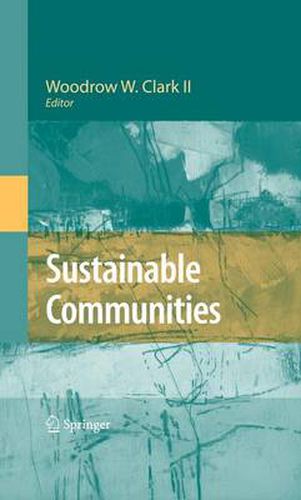Readings Newsletter
Become a Readings Member to make your shopping experience even easier.
Sign in or sign up for free!
You’re not far away from qualifying for FREE standard shipping within Australia
You’ve qualified for FREE standard shipping within Australia
The cart is loading…






This title is printed to order. This book may have been self-published. If so, we cannot guarantee the quality of the content. In the main most books will have gone through the editing process however some may not. We therefore suggest that you be aware of this before ordering this book. If in doubt check either the author or publisher’s details as we are unable to accept any returns unless they are faulty. Please contact us if you have any questions.
This book would not have been possible without the dedication and commitment of each of the chapter authors. For some authors, writing a chapter was beyond their 9-5 job, and this book re?ects their commitment to sustainability at the local level for their communities. To every chapter author and their staff, friends, and families, thank you. This dynamic and paradigm-changing volume on the topic of sustainable development is focused on communities such as cities, schools, and colleges where the future of our families and children are most at risk. We must act today as each of the chapters represents in their presentations. This book marks a new era: the Third Industrial Revolution. The new age of the Third Industrial Revolution has been labeled by some as the green era or green economy, but it had already started around the world, especially in Europe and Japan, for over a decade - since the end of the 20th c- tury. More signi?cantly, the book highlights people and communities who have a shared concern and vision along with the will and determination to enact programs and polices that make sustainable development real - not just political rhetoric or branding or even the current buzz word for obtaining funds and grants. The book presents The Sequel to an Inconvenient Truth - actual examples of how c- munities can and have changed in order to mitigate climate change. Again, thanks to everyone and their colleagues.
$9.00 standard shipping within Australia
FREE standard shipping within Australia for orders over $100.00
Express & International shipping calculated at checkout
This title is printed to order. This book may have been self-published. If so, we cannot guarantee the quality of the content. In the main most books will have gone through the editing process however some may not. We therefore suggest that you be aware of this before ordering this book. If in doubt check either the author or publisher’s details as we are unable to accept any returns unless they are faulty. Please contact us if you have any questions.
This book would not have been possible without the dedication and commitment of each of the chapter authors. For some authors, writing a chapter was beyond their 9-5 job, and this book re?ects their commitment to sustainability at the local level for their communities. To every chapter author and their staff, friends, and families, thank you. This dynamic and paradigm-changing volume on the topic of sustainable development is focused on communities such as cities, schools, and colleges where the future of our families and children are most at risk. We must act today as each of the chapters represents in their presentations. This book marks a new era: the Third Industrial Revolution. The new age of the Third Industrial Revolution has been labeled by some as the green era or green economy, but it had already started around the world, especially in Europe and Japan, for over a decade - since the end of the 20th c- tury. More signi?cantly, the book highlights people and communities who have a shared concern and vision along with the will and determination to enact programs and polices that make sustainable development real - not just political rhetoric or branding or even the current buzz word for obtaining funds and grants. The book presents The Sequel to an Inconvenient Truth - actual examples of how c- munities can and have changed in order to mitigate climate change. Again, thanks to everyone and their colleagues.